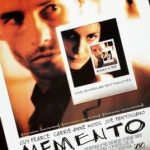The Blair Witch Project (1999)
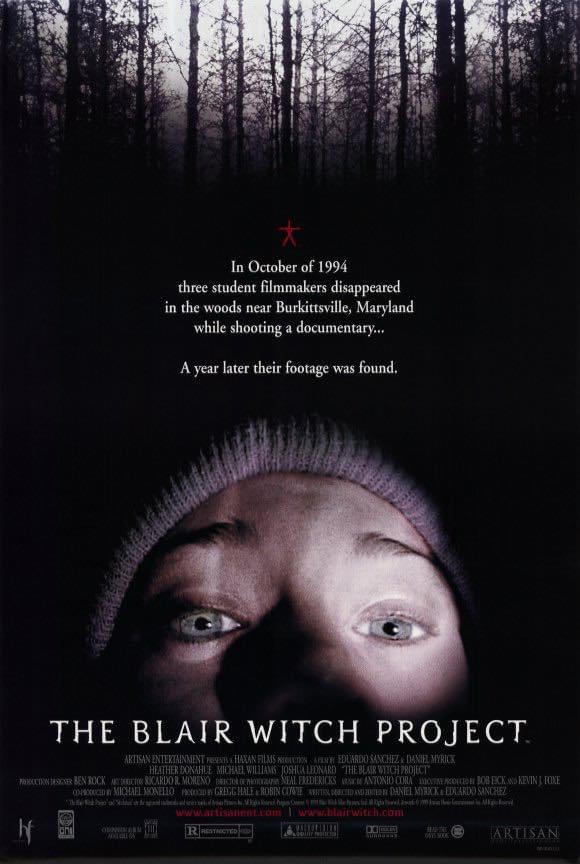
The Blair Witch Project (1999), directed by Daniel Myrick and Eduardo Sánchez, is a landmark in horror cinema that redefined the genre through its pioneering use of the “found footage” style. Produced on a meager budget of $60,000, the film became a cultural phenomenon, grossing over $248 million worldwide and popularizing a subgenre that would inspire countless imitators. What sets The Blair Witch Project apart is its minimalistic yet highly immersive approach to horror, relying on atmosphere, suggestion, and psychological tension rather than traditional scares or special effects.
Suggested videos for you:
Plot Overview
The movie’s story is deceptively simple. Three student filmmakers—Heather Donahue, Michael Williams, and Joshua Leonard—set out to make a documentary about the legend of the Blair Witch, a mythical figure said to haunt the Black Hills Forest near Burkittsville, Maryland. Armed with cameras, camping equipment, and a map, they venture deep into the woods to film their investigation, interviewing local townspeople who recount various unsettling stories about the witch and the disappearances of children linked to her.
What starts as a lighthearted documentary project quickly turns dark as the trio becomes lost in the labyrinthine woods. Strange occurrences begin to haunt their nights: eerie noises, piles of stones arranged outside their tent, and unsettling stick figures hanging from trees. As their supplies dwindle and their anxiety mounts, the tension between the three filmmakers escalates, adding a layer of interpersonal conflict to their growing fear. When Josh mysteriously disappears, Heather and Mike are left alone to grapple with their escalating terror.
The film reaches its climax when Heather and Mike, following strange sounds, discover an abandoned house in the woods. Inside, they find handprints of children on the walls and hear Josh’s screams. The final scene, shot in shaky handheld footage, shows Mike standing in a corner of the basement before Heather is attacked, and her camera falls to the ground. The screen goes black, leaving the audience with an ambiguous, chilling conclusion.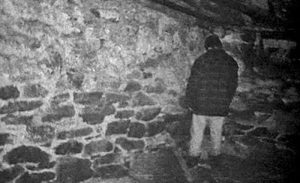
Innovative Use of Found Footage
The most defining feature of The Blair Witch Project is its use of the found footage technique. While not the first film to use this style—films like Cannibal Holocaust (1980) did so earlier—The Blair Witch Project brought it into the mainstream, revolutionizing the horror genre in the process. By presenting the film as “real” footage recovered after the filmmakers’ disappearance, it blurred the lines between fiction and reality. The handheld, amateurish quality of the footage made the events feel raw and authentic, heightening the viewer’s immersion and dread.
The film’s marketing campaign further enhanced this sense of realism. Prior to the film’s release, the filmmakers launched a viral campaign that suggested the movie’s events were real and that the actors were genuinely missing. Online forums, mockumentaries, and missing person posters fueled speculation, drawing in audiences who were unsure if they were watching a work of fiction or a documentary. This use of viral marketing, combined with the found footage style, made the film feel like a chilling piece of reality captured on tape.
The decision to shoot much of the film on consumer-grade cameras also contributed to its unsettling authenticity. The unsteady, shaky footage, filled with extreme close-ups, awkward framing, and disorienting movement, mirrors the characters’ growing panic and disorientation. The lack of clear, polished visuals forces the audience to engage their imagination, making the fear of the unseen even more palpable.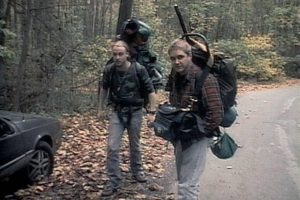
Themes of Fear and Isolation
At its core, The Blair Witch Project is about fear—specifically, the fear of the unknown. The film taps into primal, universal fears: getting lost, being hunted, and facing something beyond comprehension. The Blair Witch is never shown on screen, and the movie’s power lies in its restraint. Rather than presenting a tangible monster or offering concrete explanations, the film lets the audience’s imagination do the work. The ambiguity surrounding the events in the forest—the strange sounds, the symbols, the disappearances—creates a pervasive sense of dread that lingers long after the credits roll.
The film also explores the psychological effects of isolation and fear. As the characters realize they are lost and their situation becomes more dire, they turn on each other, their camaraderie unraveling under the pressure. Heather, initially the confident leader, is blamed for leading the group into danger, and the film portrays her descent into guilt and panic. The tension between the characters mirrors the escalating horror of the situation, creating a layered narrative where the fear is both external (the unseen force in the woods) and internal (the breakdown of trust and sanity).
The film’s setting—the dark, oppressive forest—amplifies these themes. The Black Hills Forest becomes a character in its own right, a vast and impenetrable force that traps the filmmakers and disorients them. The forest is a symbol of the unknown and unknowable, a place where time and space seem to distort, and where the rules of the natural world no longer apply. The characters’ attempts to navigate the forest, only to find themselves walking in circles, heightens the sense of hopelessness and entrapment. Nature itself becomes a malevolent force, indifferent to their suffering.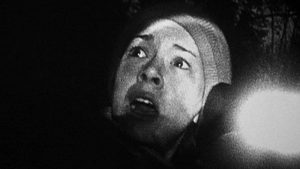
Performances and Naturalism
The performances in The Blair Witch Project are critical to its success, and the actors’ naturalistic, improvised dialogue makes the characters’ fear feel real. Heather Donahue, in particular, delivers a standout performance, especially in the now-iconic scene where she tearfully apologizes to the camera, acknowledging her role in leading her friends into danger. Her vulnerability and mounting desperation are palpable, and this scene has become one of the defining images of the film.
The decision to have the actors film much of the footage themselves added to the film’s authenticity. Myrick and Sánchez gave the cast minimal direction, allowing them to improvise much of the dialogue and react to the situation organically. This approach gives the film a raw, documentary feel, as the actors’ performances are often spontaneous and unpolished, adding to the realism. The interactions between the characters feel genuine, and their frustration, exhaustion, and fear are conveyed in subtle, believable ways.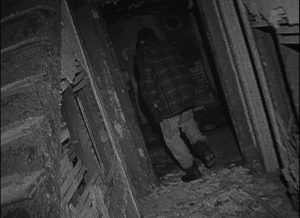
Design and Atmosphere
While The Blair Witch Project is visually minimalistic, its sound design is a crucial component of its horror. The film makes masterful use of sound to create an atmosphere of escalating dread. Much of the fear comes not from what is seen, but from what is heard: the distant snapping of twigs, the rustling of leaves, strange voices, and the eerie, unidentifiable noises that echo through the forest at night. The lack of a traditional musical score enhances this effect, as the only sounds are those generated by the environment and the characters, making the silences even more ominous.
The film’s minimalism in both sound and visuals forces the audience to engage their imagination. By withholding clear explanations and avoiding explicit depictions of the Blair Witch, the filmmakers created a psychological horror experience where the audience fills in the blanks with their own fears. This use of suggestion over spectacle is what makes The Blair Witch Project so effective—it understands that what is unseen and unknown is often far more terrifying than anything that can be shown on screen.
Cultural Impact and Legacy
The Blair Witch Project had a profound impact on the horror genre and the broader film industry. Its success proved that low-budget, independent films could achieve massive mainstream success, and its viral marketing campaign became a model for future films. The found footage style, popularized by this film, went on to inspire a wave of imitators in the 2000s and 2010s, from Paranormal Activity (2007) to Cloverfield (2008), solidifying it as a major subgenre in horror.
The film’s influence extends beyond its stylistic innovations. It also helped shift horror away from the slasher and gore-centric films of the 1980s and early 1990s, moving toward more psychological, atmospheric horror that emphasized tension and mood over explicit violence. This focus on minimalism, ambiguity, and psychological terror has had a lasting influence on modern horror filmmakers.
Conclusion
The Blair Witch Project remains a masterclass in psychological horror, demonstrating how effective storytelling, atmosphere, and suggestion can create an overwhelming sense of dread without relying on traditional horror tropes or expensive special effects. Its innovative use of found footage, immersive performances, and eerie sound design make it a uniquely unsettling experience that plays on deep-seated fears of isolation, the unknown, and losing control. Though it has been imitated countless times, the original Blair Witch retains its place as one of the most influential and frightening films of its era, and its impact on the horror genre continues to be felt today.





